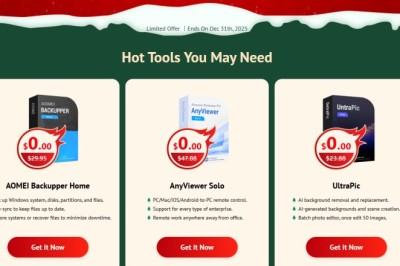views

As a yacht owner, proper maintenance is essential to ensure that your vessel remains in top condition and continues to provide you with countless hours of enjoyment on the open waters. Regular maintenance not only prolongs the lifespan of your yacht but also helps prevent costly repairs and ensures a safe and smooth sailing experience. In this article, we will share ten easy maintenance tips that will keep your yacht in pristine condition.
1. Establish a Routine Maintenance Schedule
The first step to efficient yacht maintenance is to establish a regular maintenance schedule. This schedule should include routine tasks such as cleaning, inspections, and servicing of essential systems. By following a set maintenance schedule, you can stay organized and ensure that no important tasks are overlooked.
Creating a maintenance checklist with specific tasks and their frequencies can be helpful in keeping track of what needs to be done and when. Dedicate time on a weekly, monthly, and annual basis to address various maintenance tasks to keep your yacht in top shape. Even features that are built to withstand the elements, like teak decking, need special attention. Regular teak decking care and maintenance should be added to your routine to ensure they remain in excellent condition and prolong their lifespan.
2. Keep the Hull Clean
Regularly cleaning the hull of your yacht is crucial to prevent the build-up of algae, barnacles, and other marine organisms. These unwanted guests can increase drag and decrease fuel efficiency. Use a soft brush or a pressure washer to remove any fouling, and consider applying an antifouling paint to the hull to deter future growth.
Inspect the hull regularly for any signs of damage or wear, such as cracks, blisters, or peeling paint. These issues should be addressed promptly to prevent further damage and ensure the integrity of your yacht's structure.
3. Check and Replace Anodes
Anodes play a vital role in protecting your yacht's metal components from corrosion. These sacrificial metals are designed to deteriorate over time, diverting the corrosive action away from the more critical parts of the yacht. Regularly inspect the anodes and replace them if they are significantly corroded or have almost completely eroded. It's important to keep an eye on anodes to ensure they are functioning correctly and providing adequate protection.
4. Service the Engine and Generator
Your yacht's engine and generator are its heart and soul, so regular servicing is essential for their smooth operation. Follow the manufacturer's recommended maintenance intervals for oil changes, filter replacements, and other necessary tasks. Also, be sure to check and top up fluid levels such as oil, coolant, and seawater intake.
In addition to regular servicing, pay attention to any unusual noises, vibrations, or changes in engine performance. These could be signs of potential issues that require immediate attention from a professional marine mechanic.
5. Maintain the Battery System
A well-maintained battery system is essential for reliable onboard power. Regularly inspect the batteries for signs of corrosion and clean the connections. Test the batteries periodically to ensure they are holding a charge, and replace any batteries that are no longer performing properly.
Make sure to follow the manufacturer's guidelines for battery maintenance, such as using the correct charging procedures and avoiding overcharging or undercharging the batteries. Proper care of your battery system will help prolong its lifespan and prevent unexpected power failures while out on the water.
6. Inspect and Lubricate Moving Parts
Your yacht is composed of numerous moving parts, such as hinges, winches, and steering mechanisms. Regularly inspect these components for signs of wear and tear, and lubricate them as necessary. Proper lubrication prevents unnecessary friction and ensures smooth and efficient operation.
Use a marine-grade lubricant suitable for the specific application and follow the manufacturer's recommendations for lubrication intervals. Regular inspection and lubrication of moving parts will reduce the risk of damage or failure, ultimately improving the overall performance and longevity of your yacht.
7. Keep the Interior Clean and Dry
Interior cleanliness is just as important as the exterior when it comes to yacht maintenance. Regularly clean the interior surfaces, including floors, countertops, and upholstery. Use appropriate cleaners and protectants that are safe for the materials used in your yacht's interior. Additionally, make sure to keep the interior dry and well-ventilated to prevent the growth of mold and mildew.
Address any spills or stains promptly to avoid permanent damage to interior surfaces. Use moisture-absorbing products or dehumidifiers in enclosed spaces to maintain optimal humidity levels and prevent moisture-related issues.
8. Test Safety Equipment
The safety of passengers and crew should always be a top priority. Regularly test and inspect all safety equipment on board, including life jackets, fire extinguishers, flares, and emergency signaling devices. Replace any expired or damaged items and ensure that everyone on board knows the location and proper usage of the safety equipment.
Conduct safety drills with your crew to familiarize everyone with emergency procedures and ensure they are prepared to handle any potential emergencies. Additionally, keep a well-stocked first aid kit on board and regularly check its contents for expiration dates or missing items.
9. Check and Clean Plumbing Systems
Your yacht's plumbing systems, including fresh water and sewage systems, require regular maintenance to function properly. Check for any leaks, blockages, or signs of wear. Clean the water tanks, filters, and lines regularly to keep the water flowing smoothly and ensure a safe and sanitary environment on board.
Perform routine checks of all faucets, toilets, and showers to ensure they are operating correctly. If you notice any issues, address them promptly to prevent more significant problems down the line. Familiarize yourself with the location of shut-off valves and seacocks so that you can quickly isolate any plumbing-related issues.
10. Monitor and Maintain Electronics and Navigation Systems
Modern yachts are equipped with a range of electronics and navigation systems that require regular maintenance. Inspect and test these systems to ensure they are functioning correctly. Clean the screens and controls, check the wiring connections, and update any software or firmware as recommended by the manufacturer.
Keep spare fuses, bulbs, and other critical electronic components on board in case of failures. Regularly back up electronic charts and data to prevent loss in the event of equipment malfunctions or software glitches.
Conclusion
Proper maintenance is crucial for the longevity and performance of your yacht. By following these ten easy maintenance tips, you can keep your vessel in excellent condition and enjoy many years of trouble-free cruising. Remember to establish a routine maintenance schedule, regularly clean the hull, check and replace anodes, service the engine and generator, maintain the battery system, inspect and lubricate moving parts, keep the interior clean and dry, test safety equipment, check and clean plumbing systems, and monitor and maintain electronics and navigation systems.
By dedicating a little time and effort to regular maintenance, you can ensure that your yacht is always ready for smooth sailing and unforgettable adventures on the open waters. So take care of your yacht, and it will continue to provide you with endless enjoyment for years to come.


























Comments
0 comment